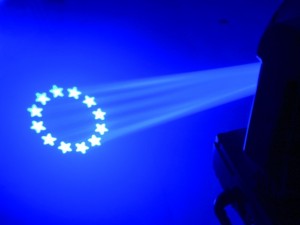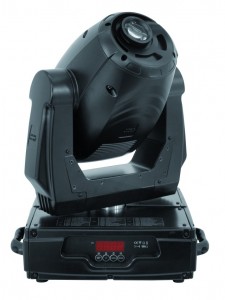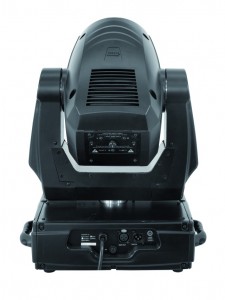New technology, new face – Futurelight’s PHS 210 follows PHS-200
 It’s time for something new: Futurelight welcomes the PHS-200 successor, the PHS-210. In the past eight years it has been proven a thousand times: The PHS-200 is Futurelight’s reliable starter model – notably for light engineers with professional ambitions. The new PHS-210 will follow this tradition with an updated technology. It is available from now on.
It’s time for something new: Futurelight welcomes the PHS-200 successor, the PHS-210. In the past eight years it has been proven a thousand times: The PHS-200 is Futurelight’s reliable starter model – notably for light engineers with professional ambitions. The new PHS-210 will follow this tradition with an updated technology. It is available from now on.
An important renewal: the readjustment to a 16-bit resolution for pan and tilt movements. The mechanic dimmer forms another upgrade. The number of LED channels, however, has been kept at moderate dimensions. Eleven are only three DMX channels more than the predecessor offered. According to this approach, comfortable working with smaller-sized DMX controllers is still possible.
An enhanced running smoothness as well as quicker gobo and color changes can also be put on the list of positive modifications. The device’s design has been carefully adapted to that of its “big brother” PHS-280.
With the power of its 250-watt illuminant, the PHS-210 reaches a brightness level of 21,000 lux at a distance of 2.5 meters. A performance which is definitely able to take up the competitors’ pace. An optional upload box enables easy software updates via DMX link.
The PHS-210 has been developed for the use in discotheques and on small and middle-sized stages. According to that, the 56 programmed scenes surely don’t come amiss. Thanks to the spot’s low weight of less than 20 kilos it makes only modest demands of mechanics of respective event locations.


Features:
– DMX-controlled operation or stand-alone operation with Master/Slave function
– 56 preprogrammed scenes in Program Run for stand-alone operation
– Number of scenes in Program Run can be changed individually
– The scenes in Program Run can be modified via the Control Board or via an external controller and loaded into the memory
– 7 built-in programs can be called up via DMX controller
– Sound-controlled via built-in microphone
– Color-wheel with 7 different, dichroic color filters and white and additionally UV-filter
– Switchable color change (mode 1: only full colors, mode 2: color-change at every position)
– Rainbow effect with adjustable speed
– Gobo-wheel with 7 rotating gobos plus open
– With gobo-shake function
– Manual focus
– Strobe effect with 1-10 flashes per second
– Mechanic dimmer
– PAN-angle switchable between 630° and 540°
– Exact positioning via 16 bit PAN/TILT movement resolution
– Lightbeam with 13° radiation angle
– Software-upload by optional FUTURELIGHT ULB-1 upload box via DMX link
– Control-Board with LCD-display and foil-keyboard for adjusting the DMX-starting address, PAN/TILT-Reverse, Program, Reset, lamp on/off, operating hours
– For MSD/HSD 250 or MSD 250/2 lamp
– DMX control via every standard DMX controller
Technical specifications:
Power supply: 230 V AC, 50 Hz ~
Power consumption: 550 W
DMX control channels: 11
DMX512 connection: 3-pin XLR
Flash-rate: 10 Hz
Color-wheel: 7 dichroic filters, UV-filter plus open
Rotating gobo-wheel: 7 gobos and open
Outside diameter of the gobos: 27 mm
Image diameter of the gobos: 22 mm
Maximum PAN-movement 630°: in 2.5 s
Maximum TILT-movement 265°: in 1.5 s
Length of base: 400 mm
Width of yoke: 350 mm
Height (head horizontal): 445 mm
Weight (net): 19 kg


